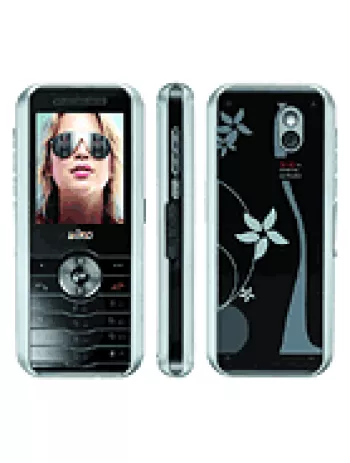
Overview of the Bird D716
The Bird D716 was a feature phone announced in 2007, a time when mobile phones were shifting from simple communication tools to more versatile devices. Positioned in the mid-range market, the Bird D716 tried to offer practicality, reliability, and a touch of style to its users. With its compact design and basic multimedia features, it catered to users who needed essential phone functionalities in a stylish package.
Design and Build
The Bird D716 boasted a compact body with dimensions of 105.8 x 46 x 12.8 mm and a weight of 81 g, making it easy to fit in the pocket and comfortable to hold. The design aesthetic was emphasized by its Mirror Silver color, exuding a sleek and modern look. The phone came with a Mini-SIM slot and featured a removable Li-Ion 600 mAh battery, which was a standard for the range of mobile phones at the time, ensuring that users could easily replace the battery when needed.
Display
The device featured a TFT display with a size of 1.9 inches, offering a resolution of 176 x 220 pixels. With a color depth of 260K colors, the display provided vibrant color reproduction for the time, making it adequate for viewing photos and basic media. However, with a screen-to-body ratio of roughly 23.3%, the screen was quite small compared to the body, which was typical for phones of this era.
Camera Capabilities
The Bird D716 was equipped with a single 2 MP autofocus camera, a noteworthy feature for a feature phone from 2007. Although basic by today’s standards, this camera allowed users to capture photos and videos, adding a multimedia dimension to the device. The absence of a selfie camera was standard for mobile devices at the time.
Battery Performance
The removable Li-Ion 600 mAh battery provided adequate power, offering up to 120 hours of standby time and up to 3.30 hours of talk time. In the context of feature phones, this was sufficient for most users who primarily used their phones for calls and text messages. The design allowed for ease of battery replacement, extending the device's overall lifespan.
Storage and Memory
The internal storage of the Bird D716 was 60MB, which could be considered minimal by modern standards but was typical for feature phones at the time. It allowed users to store essential data, such as contacts and a limited number of photos. The presence of a dedicated microSD slot meant that users could expand the storage, enabling them to carry more media or important files.
Network and Connectivity
The Bird D716 supported GSM technology and operated on 2G bands (GSM 900/1800). For data, it utilized GPRS Class 12 but did not support EDGE, limiting its internet capabilities to basic browsing through WAP 2.0. Connectivity features were sparse, with no Bluetooth, WLAN, or positioning capabilities, which were typical omissions for feature phones.
Sound and Multimedia Features
The phone included a loudspeaker for hands-free calls and supported vibration alerts and downloadable polyphonic, MP3 ringtones, providing users with customization options for notifications. However, it did not have a 3.5mm audio jack, a feature that limited its use for extended multimedia or music play.
Software and Applications
As a feature phone, the Bird D716 utilized a basic operating system designed for essential functions. It included support for SMS, EMS, and MMS messaging, which was sufficient for users looking to communicate effectively. The browser capability was limited to WAP 2.0, allowing for basic internet browsing. Additionally, the phone supported Java MIDP 2.0 applications, giving users access to simple Java applications and games, enhancing entertainment options.
Conclusion
The Bird D716 was a robust feature phone of its time, blending essential functionalities with stylish design. Its balance of design, battery life, basic imaging, and limited web capabilities made it a practical choice for users in 2007. However, as mobile technology rapidly advanced post its release, devices like the Bird D716 were phased out in favor of more sophisticated options, signaling an era that laid the groundwork for modern mobile technology.
Key Features of Bird D716
- Slim and Lightweight Design: Weighs only 81 g with dimensions of 105.8 x 46 x 12.8 mm, making it portable and easy to handle.
- TFT Display: Features a 1.9-inch TFT screen that displays 260K colors for a vibrant viewing experience.
- Expandable Storage: Comes with 60MB of internal memory and supports microSD cards for additional storage.
- 2 MP Main Camera: Equipped with an autofocus main camera capable of capturing essential moments.
- Removable Battery: Powered by a removable Li-Ion 600 mAh battery providing up to 120 hours of standby time and up to 3.30 hours of talk time.
- Messaging Capabilities: Supports SMS, EMS, and MMS messaging formats.
- Java Support: Includes support for Java MIDP 2.0 allowing for enhanced application compatibility.
- Unique Mirror Silver Color: Available in a stylish and reflective Mirror Silver color.
Disadvantages of the Bird D716
- Lacks EDGE support, limiting data speed to GPRS only.
- Discontinued status means no official support or updates.
- Limited display area with a 1.9 inches screen and low screen-to-body ratio (~23.3%).
- Low internal memory of 60MB, which may be insufficient for modern needs.
- No front-facing (selfie) camera available.
- No support for Wi-Fi connectivity.
- Absence of Bluetooth, which limits wireless connectivity options.
- No GPS functionality for positioning services.
- Does not feature a standard 3.5mm headphone jack.
- Lacks built-in radio support.
- Proprietary USB interface, which may restrict charging and data transfer options.
- Short battery life with a limited 600 mAh removable battery.
View Also
More Phones
All Rights Reserved +14267 Phones © Mobilawy 2025
























